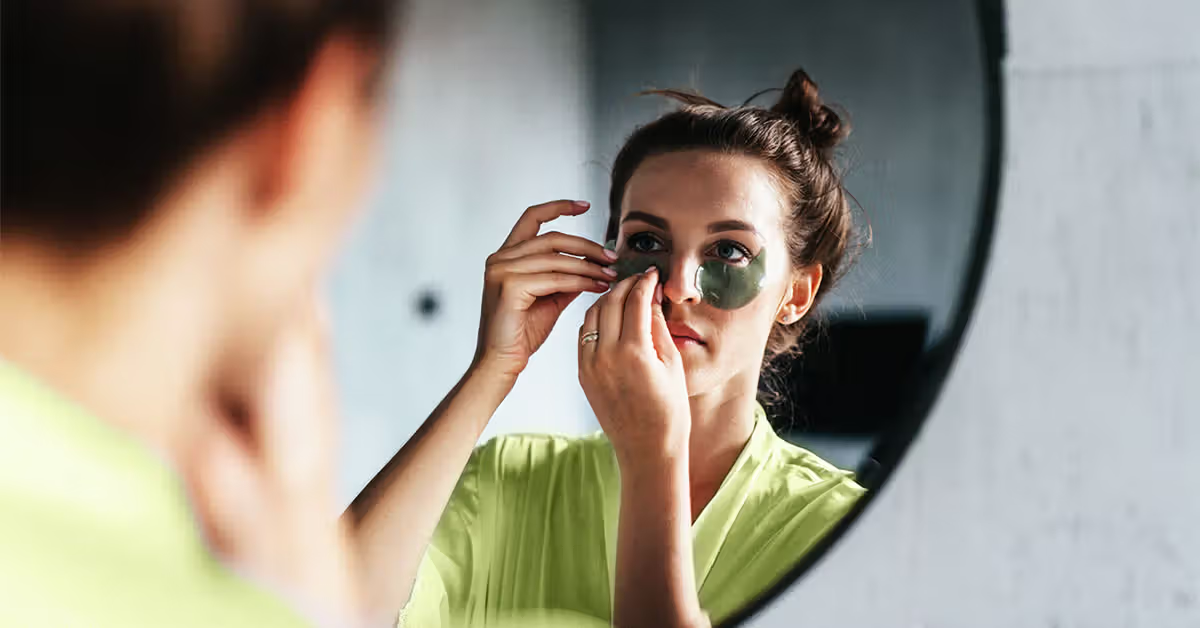The Mind-Body Connection: Why Holistic Wellness Books Matter
Feeling overwhelmed by health advice that treats your body like a collection of separate parts? You’re not alone. That’s why we’ve curated the top 5 holistic wellness books that view you as a whole person—body, mind, and spirit connected.
Our carefully selected recommendations based on reader experiences and expert insights include:
Living Ayurveda by Claire Ragozzino transforms seasonal eating habits and helps you understand your unique constitution. Body Into Balance by Maria Noël Groves opens the door to herbal medicine for beginners with accessible wisdom. For those curious about energy work, Energy Medicine for Beginners by Sarah Parker-Thomas breaks down complex concepts into practical techniques. Dr. Frank Lipman’s How to Be Well offers simple daily habits that create profound health shifts. And The Ayurvedic Self-Care Handbook by Sarah Kucera guides you through nurturing routines that change with the seasons.
When you think about it, conventional healthcare often feels like playing whack-a-mole with symptoms, doesn’t it? You treat one issue only to have another pop up. Holistic wellness books offer a refreshing alternative—they help you see the connections between seemingly unrelated aspects of your health.
As Dr. Mark Hyman wisely points out, “We’ve come to realize that toxins cross over between the body and mind. Truly, detox needs to keep up with the evolving science.” This perfectly captures why so many of us are drawn to holistic approaches—they address you as a complete person, not just a collection of symptoms.
With Barnes & Noble alone offering over 14,500 titles in this category, finding your perfect wellness companion can feel daunting. The best guides strike that sweet spot between ancient wisdom and modern research, offering practices you can actually incorporate into your busy life.
Whether you’re addressing specific health concerns or simply seeking more vitality and balance, the right holistic wellness book can be like having a wise friend guiding your journey toward better health.

What Are Holistic Wellness Books?
Holistic wellness books are like comprehensive road maps that show how all aspects of your health are connected highways rather than separate dead-end streets. They recognize that your physical symptoms, emotional state, thought patterns, and spiritual practices all influence each other in profound ways.
Unlike conventional health guides that might zero in on just your digestive system or just your stress levels, holistic approaches consider the full picture—how your diet affects your mood, how your relationships impact your physical health, and how your environment shapes your wellbeing.
As Dr. Nicole Apelian, who wrote “The Holistic Guide to Wellness,” puts it: “Many doctors today are well-trained to deal with symptoms of a disease, but NOT to address the underlying imbalances that perpetuate illness.” This is exactly the gap that holistic literature aims to bridge, empowering you to become your own health detective and address root causes rather than just managing symptoms.
What makes these books special is their beautiful blend of time-tested wisdom and cutting-edge science. They might show you how ancient Ayurvedic principles align perfectly with recent gut microbiome research, or how Traditional Chinese Medicine practices support modern stress management techniques.
At Beyond Beauty Lab, we firmly believe that true beauty isn’t just skin deep—it radiates from balanced wellness within. The books we’re about to explore aren’t just reads; they’re potential life companions that can help you cultivate harmony from the inside out.
1. Living Ayurveda by Claire Ragozzino

If you’re curious about that ancient system of healing everyone’s talking about lately, Claire Ragozzino’s Living Ayurveda is your perfect entry point. This isn’t just another wellness trend – it’s a 5,000-year-old approach to health that Ragozzino translates into everyday language we can all understand and apply.
What I love most about this book is how Claire makes the concept of doshas – those three energetic forces that make us who we are – feel like meeting old friends. Whether you’re primarily Vata (airy, creative, prone to anxiety), Pitta (fiery, focused, sometimes irritable), or Kapha (earthy, steady, occasionally sluggish), you’ll find exactly how to bring yourself back into balance.
“When we eat according to the seasons and our unique constitution, we naturally come into harmony with nature’s rhythms,” Ragozzino writes, and this simple truth forms the heart of her approach. The book gently guides you to see food as actual medicine – not in a clinical, boring way, but as delicious seasonal meals that happen to make you feel amazing.
Inside, you’ll find a comprehensive dosha quiz that helps you understand your unique makeup, along with 80+ mouthwatering recipes organized by season and dosha type. Claire doesn’t stop at food, though. She walks you through creating morning, afternoon, and evening rituals that ground your day, plus herbal protocols for common issues and yoga practices custom to each constitution.
One reader’s experience really captures the book’s impact: “Before finding Living Ayurveda, I struggled with digestive issues and seasonal allergies for years. After implementing Claire’s seasonal eating recommendations and morning rituals for just one month, I noticed significant improvements in both areas. The recipes are delicious and the explanations make complex Ayurvedic concepts easy to understand.”
What truly sets Living Ayurveda apart is its flexibility. Rather than prescribing strict rules, Claire encourages you to observe how different foods and activities affect your unique body, building an intuitive relationship with yourself. It’s Ayurveda as a living, breathing practice that fits into modern life.
For anyone looking to build health from the foundation up, this book offers a warm, accessible roadmap that honors ancient wisdom while fitting perfectly into today’s world. The scientific research supporting Ayurvedic nutrition continues to grow, making this time-tested approach more relevant than ever.
2. Body Into Balance by Maria Noël Groves

If you’ve ever been curious about herbalism but felt intimidated by the learning curve, Maria Noël Groves’ Body Into Balance is the perfect entry point. This beloved guide (boasting an impressive 4.8/5 stars from over 1,300 readers) makes medicinal plants approachable while still offering substantial depth.
What I love most about this book is how Groves organizes everything by body systems. Instead of memorizing endless plant properties, you can simply turn to the digestive, immune, or nervous system chapters based on what’s bothering you. As Groves wisely notes, “An antacid or an aspirin may soothe your pain, but it doesn’t cure the cause of your symptoms.” This gentle reminder helps shift our thinking from quick fixes to addressing underlying imbalances.
The photography throughout is absolutely stunning and incredibly practical. Ever wondered exactly how to make a tincture or salve? The step-by-step visual guides take the mystery out of the process, making you feel like you have a knowledgeable friend right beside you in the kitchen.
For those of us at Beyond Beauty Lab who believe true beauty starts from within, this book resonates deeply. I particularly appreciate Groves’ emphasis on daily herbal support rather than just crisis care. She writes, “Herbs offer the greatest health benefits when incorporated into a daily regimen to prevent disease,” which perfectly aligns with our philosophy that consistent self-care creates the foundation for radiant health.
One reader’s story particularly touched me. After years of struggling with stress-induced insomnia, she followed Groves’ nervous system protocol—combining evening lemon balm tea with a small dose of California poppy tincture before bed. The simple routine transformed her sleep quality, and more importantly, gave her the confidence to create effective remedies in her own kitchen.
Beyond the remedies themselves, Groves provides thoughtful safety information for each herb, clear dosage guidelines for different ages, and practical advice for identifying medicinal plants in the wild. Whether you’re dealing with seasonal immune challenges, digestive discomfort, or simply want to incorporate more plant wisdom into your daily life, Body Into Balance offers a trustworthy, accessible path forward.
3. Energy Medicine for Beginners by Sarah Parker-Thomas
If you’ve ever been curious about energy healing but felt intimidated by crystals and chakra talk, Energy Medicine for Beginners is the perfect gateway. Sarah Parker-Thomas has created something special here – a guide that makes the invisible world of energy healing both approachable and practical.
Parker-Thomas strikes a beautiful balance between ancient wisdom and modern science, explaining concepts like chakras and meridians alongside research on bioelectricity in the body. As she puts it, “Energy is neither mystical nor separate from conventional medicine; it’s simply another lens through which to understand the body’s inherent healing capabilities.”

What I love most about this book is how it puts you in the driver’s seat of your own energy. Through thoughtful self-assessment tools and simple questionnaires, you’ll learn to recognize energy imbalances before they snowball into physical problems. It’s like developing a sixth sense for your wellbeing.
The book doesn’t just explain energy medicine – it shows you how to practice it. You’ll find step-by-step energy sensing exercises that even complete beginners can follow. My personal favorite is the five-minute morning energy routine that somehow manages to be more refreshing than my usual cup of coffee!

One reader’s story particularly touched me: “I was skeptical about energy healing until persistent migraines led me to try anything. The simple daily routine for head and neck tension in this book reduced my migraine frequency from weekly to monthly within just six weeks. The explanations helped me understand why it works, which made me more consistent with practice.”
What sets this holistic wellness book apart is its grounded approach. Parker-Thomas never suggests abandoning conventional medicine – quite the opposite. She emphasizes that these practices work best alongside proper nutrition, movement, and appropriate medical care. This balanced perspective makes the book feel trustworthy and practical.
For those of us at Beyond Beauty Lab, we appreciate how energy medicine connects inner balance with outer radiance. When your energy flows freely, it shows in your complexion, posture, and the sparkle in your eyes. True beauty isn’t just skin deep – it radiates from balanced energy within.
Whether you’re dealing with stress, sleep issues, or simply curious about expanding your wellness toolkit, Energy Medicine for Beginners offers simple daily practices that can transform how you feel in your body. And isn’t that what holistic wellness is all about?
4. How to Be Well by Dr. Frank Lipman
In a world of complicated wellness advice, Dr. Frank Lipman’s How to Be Well feels like a breath of fresh air. This beautifully designed guide takes a different approach to holistic wellness books by breaking health down into six essential areas that Dr. Lipman calls the “Good Medicine Mandala”: Eat, Sleep, Move, Protect, Unwind, and Connect.
What I love most about this book is how it meets you where you are. Instead of prescribing a rigid program that feels impossible to follow, Dr. Lipman offers a menu of 100 simple health-boosting actions that you can mix and match according to your own needs.
“I’ve created a choose-your-own-trip guide to the fundamental practices of good health,” Dr. Lipman explains in the introduction. “You can implement these changes at your own pace, in whatever order makes sense for your life.”
The visual approach makes complex wellness concepts instantly digestible. Colorful infographics explain everything from gut health to sleep cycles, while step-by-step illustrations show you exactly how to perform recommended practices. Each recommendation includes both the “Why” (the science behind it) and the “How” (practical implementation steps).
The book covers an impressive range of wellness territory. You’ll find simple anti-inflammatory recipes that support gut health, illustrated movement sequences to improve mobility, practical strategies to reduce environmental toxins, and techniques for better sleep. Dr. Lipman even addresses the often-overlooked social dimension of health with community-building practices that nurture emotional wellbeing.
One reader’s experience perfectly captures the book’s practical impact: “After trying numerous complicated health plans, How to Be Well finally made wellness feel achievable. I started with just implementing the morning sunlight exposure and protein-first breakfast recommendations. Within two weeks, my energy levels stabilized, and my afternoon crashes disappeared.”
The book’s emphasis on connection particularly resonates with us at Beyond Beauty Lab. As Dr. Lipman writes, “Building friendships proactively through weekly connection, shared interests, and meaningful conversation is as important to your health as nutrition or exercise.” This perfectly aligns with our belief that true beauty radiates from holistic wellbeing that includes our relationships with others.
For anyone feeling overwhelmed by contradictory health information, How to Be Well offers a refreshingly straightforward path to wellness that honors both ancient wisdom and modern science. Its functional medicine approach addresses root causes rather than symptoms, helping you build a foundation of health that shows up as natural vitality and, yes, that unmistakable healthy glow.
Scientific research on lifestyle medicine
5. The Ayurvedic Self-Care Handbook by Sarah Kucera

Have you ever noticed how your body and mind feel different as seasons change? That’s exactly what Sarah Kucera addresses in her remarkable book, The Ayurvedic Self-Care Handbook. As both a chiropractor and certified Ayurvedic practitioner, Kucera brings something special to the table – a rare blend of Western anatomical expertise with Eastern holistic wisdom.
What I love most about this holistic wellness book is how Kucera makes ancient Ayurvedic wisdom feel completely doable for modern life. Instead of overwhelming you with complex theories, she organizes self-care practices by time of day, season, and your personal constitution (dosha), creating a roadmap that’s easy to follow no matter how busy your schedule.
“Our bodies naturally want to follow the rhythms of nature,” Kucera writes. “When we align our daily routines with these cycles, we experience greater energy, improved digestion, better sleep, and improved resilience to stress.” This simple insight forms the foundation of her approach to seasonal self-care.
The book really shines in its practical approach to burnout – something many of us struggle with. Rather than offering generic advice, Kucera helps you recognize the early warning signs specific to your constitution and provides targeted recovery practices. For Vata types prone to anxiety and scattered energy, she recommends grounding practices like oil massage and warm foods. Pitta types burning the candle at both ends benefit from cooling practices and scheduled downtime. And for Kapha types experiencing stagnation, she offers energizing movement and warming spices.
Throughout the book, you’ll find beautifully illustrated seasonal calendars that show exactly which practices support your body during each time of year. The winter recommendations have been particularly transformative for readers dealing with seasonal mood changes – combining specific foods, morning oil massage (abhyanga), and evening restorative yoga to maintain energy during darker months.
I appreciate how Kucera addresses meditation not as a one-size-fits-all practice, but as something that should be custom to your current mental state. Feeling anxious? She offers specific pranayama (breathing) techniques to calm the nervous system. Mind feeling dull? There are different practices to bring clarity and focus.
The morning and evening ritual suggestions are refreshingly realistic – many taking just 15 minutes – making this book practical even for those with demanding schedules. Her kitchen pharmacy recommendations provide simple ways to address common imbalances using everyday ingredients you likely already have.
At Beyond Beauty Lab, we’re particularly drawn to Kucera’s perspective on beauty – that true radiance comes from internal balance rather than just topical treatments. Her approach to skin health through digestion, sleep quality, and stress management perfectly aligns with our holistic beauty philosophy.
Whether you’re new to Ayurveda or have been practicing for years, The Ayurvedic Self-Care Handbook offers a refreshing, practical approach to living in harmony with nature’s rhythms. It’s the perfect guide for establishing sustainable self-care routines that honor both your unique constitution and the ever-changing seasons.
Conclusion
The journey through these five exceptional holistic wellness books reveals a common thread: true health emerges when we honor the interconnectedness of mind, body, and spirit. Each book offers a unique doorway into holistic living, whether through seasonal eating, herbal medicine, energy practices, daily wellness habits, or Ayurvedic self-care.
At Beyond Beauty Lab, we believe that authentic beauty radiates from balanced wellness within. These books provide practical tools to cultivate that inner harmony, which naturally expresses itself as outer radiance.
Rather than trying to implement everything at once, we recommend selecting one book that resonates most with your current needs and focusing on it for a full season (about three months). This approach gives you breathing room to truly integrate new practices before expanding your wellness toolkit – quality over quantity always yields more sustainable results.
As Dr. Mona Lisa Schulz beautifully puts it, “Our bodies, in their infinite wisdom and love, are inherently designed to heal. If you cut your finger, your body will jump into action, and before you know it, that cut will be healed. Why wouldn’t it be the same with other parts of our bodies and minds?” The books we’ve shared help activate and support this innate healing intelligence that already lives within you.
Holistic wellness isn’t about perfection—it’s about creating greater harmony and resilience through daily choices. Those small, consistent actions often create more meaningful change than dramatic overhauls that quickly fizzle out.
We’d love to hear which of these holistic wellness books speaks to you most, or if you have other favorites that have transformed your approach to health. Connect with us on social media to continue the conversation and share your wellness journey!
More info about holistic self-care
Frequently Asked Questions about holistic wellness books
What age groups benefit most from holistic wellness books?
People of all ages can benefit from holistic wellness approaches, though the specific books and practices may vary by life stage. Young adults often appreciate these resources for establishing healthy foundations as they steer independence. Middle-aged readers frequently turn to holistic wisdom when addressing chronic health concerns or seeking preventive strategies. Seniors find value in approaches that support healthy aging and maintain quality of life.
Many of the books we’ve recommended include modifications for different age groups. For example, Body Into Balance provides specific herbal dosage guidelines across the lifespan, while The Ayurvedic Self-Care Handbook offers practices adaptable for different life stages. Parents interested in holistic approaches for children might explore specialized titles like “The Holistic Pediatrician” by Kathi Kemper, MD, which brings integrative principles to children’s health.
Can these books complement conventional medical care?
Absolutely! Holistic wellness books work best as companions to, not replacements for, appropriate conventional medical care. Many of our featured authors, including Dr. Frank Lipman and Maria Noël Groves, explicitly encourage readers to maintain relationships with healthcare providers while implementing holistic practices.
The most effective approach to wellness often combines the diagnostic precision and acute care strengths of conventional medicine with the preventive and lifestyle-oriented focus of holistic approaches. For instance, someone managing diabetes might work with their physician on medication while using Ayurvedic dietary principles from Living Ayurveda to support blood sugar balance.
Always inform your healthcare providers about any herbs, supplements, or alternative practices you’re implementing, as some may interact with medications or treatments. The best holistic wellness books, like those we’ve recommended, include safety information and emphasize this integrated approach.
How do I choose the right holistic wellness book for my needs?
Selecting the ideal holistic wellness book depends on several factors:
Your primary health concerns matter most – if you’re dealing with specific issues like digestive problems or stress, look for books that address these areas in depth. Body Into Balance organizes content by body system, making it easy to find relevant information.
Consider your learning style too. Visual learners might prefer How to Be Well with its infographics and illustrations. Those who learn through stories might connect more with books featuring case studies and personal anecdotes.
Your experience level guides your choice as well. If you’re new to holistic concepts, start with a book offering clear explanations of fundamental principles, like Energy Medicine for Beginners. Those with more experience might prefer more specialized resources.
Be realistic about your time availability. The Ayurvedic Self-Care Handbook offers options ranging from 5-minute rituals to more extensive routines, making it adaptable to busy schedules.
Finally, notice your cultural resonance. Some people naturally connect with certain healing traditions. If Eastern philosophies speak to you, Ayurvedic texts might feel more meaningful than other approaches.
At Beyond Beauty Lab, we suggest reading sample chapters when available or browsing reviews from readers with similar interests. The right book should feel both inspiring and practical, offering a balance of educational content and actionable recommendations that fit your real life.







